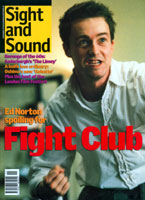Primary navigation

USA 1998
Reviewed by Mark Cousins
Our synopses give away the plot in full, including surprise twists.
Five Hungarian-American Holocaust survivors describe their experiences during the last days of World War II, when 438,000 Hungarian Jews were deported to Auschwitz in less than six weeks. They recall the early rumours of anti-Semitic beatings, the arrival of the SS in Hungary on 19 March 1944, their forced removal from their homes, ghettoisation and the intervention of Swedish diplomat Raoul Wallenberg, who saved many lives.
Some were deported first to Buchenwald or Dachau but most went straight to Auschwitz-Birkenau, where they were "selected" and separated from family members, many of whom were immediately gassed. Irene Zisblatt, Renée Firestone, Alice Lok Cahana, Bill Basch and Tom Lantos describe their various experiences in Birkenau. Lok Cahana revisits it with her son. Zisblatt goes to the ghetto with her daughter. Lantos takes his grandchildren back to show them where he was involved in the underground. Basch returns to Dachau with his son. As we hear about their lives today - Lantos is a US congressman, Lok Cahana a painter, Firestone an educator, Basch a businessman, Zisblatt a grandmother - all five reflect on how their experiences during the last days of the Holocaust have formed their view of the world.
If any subject can make film-makers rethink their technique from first principles, then surely the Shoah - Nazi Germany's attempted genocide of European Jews - will. The crime is so vast that mere texts, certainly conventional ones, seem inadequate as a means of reporting it. Writer George Steiner and others advocated literary silence and painters produced square fields of blackness. Claude Lanzmann extended the experience of watching his film Shoah to nine and a half hours, refusing ellipsis.
For its first hour at least, The Last Days attempts no such fundamental rethink. People in their late sixties and early seventies sit in their homes and recall a time of barbarism. Their tripod-shot, 35mm, widescreen interviews dissolve into slow-motion archive footage of the things they describe. Hans Zimmer's sombre music underscores. Director-editor James Moll, taking his cue from executive producer Steven Spielberg's Survivors of the Shoah Visual History Foundation, builds much of his film out of seated portraits of people in the present describing events in the past.
He does other, better things too, but it is the passivity of this basic approach, the aesthetically easy way in which the past dissolves into the present, which makes the film feel under-imagined. The fact that these people are relatively young, and that they - especially Irene Zisblatt - speak with such freshness, means their accounts are accessible and of great educational value. Occasionally striking, unfamiliar details emerge: Zisblatt's town was taken by just two SS men on motorbikes, as most of its residents were sympathisers. Others were coaxed from the ghettos by being told they were going to work in vineyards.
If this history had not been so well documented elsewhere, if the film-makers had discovered substantial new archive film, documentation or eye-witness accounts, then their presentation in any form would have been fully justified. But since The Last Days doesn't break really new ground, the nature of its presentation becomes an issue. Moll's sensitive humanism is deeply compassionate and tasteful, but there is a danger that such survivor interviews become the only way the horrific past is accessed. The unforgettable moment in Lanzmann's Shoah, when Jan Karski walks away from the camera, unable for a time to face the pain of recollection, has always seemed to me to be about the impossibility of filmically turning back the clock.
There are surely more inventive ways of exploring the themes raised in The Last Days. Imagine what a surrealist like David Lynch might make of the Shoah Foundation's extraordinary collection of half a million survivors talking. Imagine how well Maximilian Schell's techniques in his documentary film about Marlene Dietrich - where he interviewed her in sound only, then recreated her apartment in a studio - might work for this gigantic resource. What would the artist Douglas Gordon do with such material?
The Last Days grows in stature in other sequences, however. Each participant visits some of the places he or she has described and at such times the film becomes more layered. At several points the cinematic ease is broken by the appearance of Hans Munch, an off-hand Nazi doctor. Renée Firestone discovers her sister was experimented on in the "institute" where Munch was director. She meets him and shows him a list tha confirms it. He says, "It's nothing. All is good." Afterwards she comments, "I tried to be civilised. He was very evasive. I became very angry." She then visits Crematorium V where her mother died. These moments are as moving as anything I have ever seen and they are charged with the unique qualities of documentary film. They stand head and shoulders above the editorial smoothness of much of what has gone before, which amounts to a philosophical underestimation of what happened in the last days of World War II.